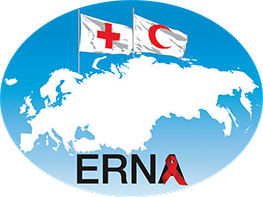The world needs a new phase in the evolution of the HIV response—one that reinvigorates prevention by seamlessly combining the efficacy of upstream, midstream, and downstream interventions with the powerful effectiveness of community action.
Gay men and other men who have sex with men, people who inject drugs, sex workers, and transgender women are 24, 24, 13.5, and 49 times more likely to acquire HIV, respectively, than adults in the general population (15 years old and older). Globally, these “key populations” disproportionately bear the burden of new infections, as gay men and other men who have sex with men, people who inject drugs, sex workers, and transgender women accounted for 45% of all new HIV infections in 2015.
Key populations are rendered vulnerable to HIV by upstream factors like punitive and discriminatory laws and politically driven policies, creating stressors that exacerbate risk for acquisition. Moreover, the absence of protective laws and policies enable unchecked stigma and discrimination in healthcare settings. These barriers mean people delay or skip seeking the services they may need, making the problem of HIV even worse.
The persistence of revisionist characterizations of HIV has never and will never change the biology of acquisition: HIV is primarily transmitted sexually and via blood through the sharing of injecting equipment. For primary prevention to stand a chance, the silence, denial, negativity, and moralism surrounding sex and drug use must end. Policy makers and donors, including governments, must shed their reluctance to openly and positively address sex and drug use in their public health discourse and responses to HIV.
Propelled by the introduction of powerful and life-saving antiretroviral medications, the increasingly bio-medicalized global HIV response challenges us to rigorously reimagine prevention. The prevention toolbox is getting bigger, but the application of the tools is getting smaller. Bio-medicalized interventions, which have been lauded as successes in the HIV response, must be strategically combined with other interventions and delivered by communities for which interventions are intended. Community-led prevention must be properly resourced.
Primary prevention remains seriously undermined by low funding levels that are grossly misaligned with the disproportionate impact HIV is having on key populations worldwide. For example, in the Global Fund to Fight AIDS, Tuberculosis, and Malaria’s 2014-2016 funding period, only $648 million of the $5.9 billion (or 12%) was specifically dedicated to programs intended for all key populations, and less than half of this was dedicated to the primary prevention of HIV.
The social shape of the HIV epidemic requires a return to a primary prevention strategy that is proactive, addresses upstream factors, re-centers communities most impacted by HIV, and properly resources combination approaches chosen and led by communities for which prevention efforts are intended. HIV and other sexual health services done with or led by community members for which the services are intended are more likely to result in earlier, comprehensive, and more frequent service engagement, and improved retention, yielding better health outcomes.
Information was taken from website of Global Network of People Living with HIV
